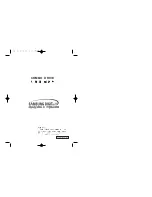
Goodrive350A series high-performance multifunction VFD
Basic operation guidelines
-59-
Note:
Torque boost takes effect only at the torque boost cut-off frequency.
If torque boost is too large, the motor may encounter low-frequency vibration or overcurrent. If
such a situation occurs, reduce the torque boost value.
Output voltage V
Output frequency f
cut-off
boost
(2)
Energy-saving run
During actual running, the VFD can search for the max. efficiency point to keep running in the most
efficient state to save energy.
Note:
This function is generally used in light load or no-load cases.
This function is no applicable to the cases where sudden load changes often occur.
(3)
V/F slip compensation gain
Space voltage vector control belongs to an open-loop mode. Sudden motor load changes cause
motor speed fluctuation. In cases where strict speed requirements must be met, you can set the slip
compensation gain to compensate for the speed change caused by load fluctuation through VFD
internal output adjustment.
The setting range of slip compensation gain is 0
–200%, in which 100% corresponds to the rated slip
frequency.
Note:
Rated slip frequency = (Rated synchronous rotation speed of motor
– Rated rotation speed of
motor) x (Number of motor pole pairs)/60
(4)
Oscillation control
Motor oscillation often occurs in space voltage vector control in large-power driving applications. To
solve this problem, the VFD provides two oscillation factor function codes. You can set the function
codes based on the oscillation occurrence frequency.
Note:
A greater value indicates better control effect. However, if the value is too large, the VFD output
current may be too large.
(5)
AM IF control
Generally, the IF control mode is valid for AMs. It can be used for SMs only when the frequency is
















































